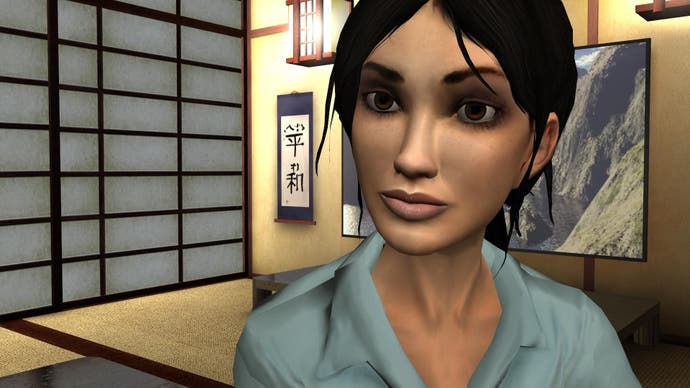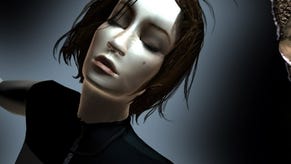Retrospective: Dreamfall: The Longest Journey
Find her. Save her.
It begins with the main character in a coma. That's the way to start. Not a coma she then wakes up from with no memory, like every other game, but the coma from within which she's telling the story.
The first word you read on screen is the opening chapter title, "TAINTED".
Every character you encounter is thoroughly depressed.
This isn't a game that's worried about drawing in the kids. In fact, it's imbued with a strong tone of melancholy that it absolutely does not let go of throughout. This is a downbeat game, and goodness knows that's rare.
But it's not so one-dimensional as to be miserable. Within the trauma, the sadness, the directionless confusion of people's lives, is a message of extraordinary optimism, a resounding cry of hope. Because there's faith.
Dreamfall is undeniably a story about faith. It's a subject that occurs all the way through, not least in the plot of the eight-year-old girl, Faith, who is trapped between realities, haunting the future of the internet, the "Wire".

Every character is somewhere on a journey with the matter, struggling to restore it, driven by it, or utterly without it.
Zoe has lost her faith in herself. April has lost her faith in everything. Kian Alvane - a third playable character - is a man of such zealous conviction in his faith that he is blinded to the wrongness of his own actions. And Faith has simply to give up.
Shortly after the end of the first game, Stark saw the Collapse. Some sort of unexplained catastrophe that saw technology and reality break down for a few days, leading to very many deaths and a global setback.
Meanwhile, in Arcadia, at the same time a race called the Azadi defends April's new hometown of Marcuria from an attack but then occupies the city. Since then, the religious fundamentalist race has brought technology to the area, but at the expense of their fear of magic. Magical non-human creatures are rounded up and forced to live in a ghetto, often executed for their "crimes".
When we finally rejoin April, she's a freedom fighter, fighting against the Azadi occupation through terrorism. But she's not fighting out of duty, or honour, or a desire to save people. She's fighting because she hates the world and herself, and it's a direction in which she can focus her misery.
It's an extended suicide mission for a woman with no hope.

Meanwhile, there's Kian, an Azadi assassin, sent to kill April. He's a man with a conviction in his Goddess that is absolute and earnest, but completely untested.
What fascinates me most is how these faiths interact. It's Zoe's encounter with April's abject emptiness that inspires her to fight. While she is inspired by many around the world, and driven by the appeals of Faith, it's only in the face of April's refusal to fight that she sees the horror of having given up and finds her own drive.
Meanwhile, Kian is transformed through his time with April. While all April has is anger, her remarkable speech in which she explains the psychological horror of an occupation captures Kian's attention. It challenges his fundamentalism on a fundamental level.
At the end of the game, when Kian reflects his transformation back on April, it is only then that a glimmer of her own faith returns. It's an extraordinary exchange, her own ability to change others the only hope for changing herself.
Then things get a little meta as Zoe, with faith restored, has to convince the eight-year-old Faith to die. It's an allegory that resonates throughout the whole story, the only route to preventing the complete collapse of the Wire, and thus the modern world, being to let Faith die. It asks serious questions about what is left in a world when it's entirely dependent upon inert technology.



